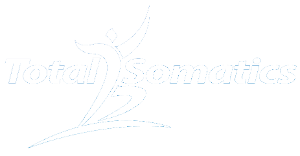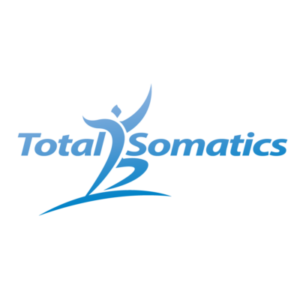Does Stretching Really Work?
In last week’s blog I encouraged readers to replace old, outdated beliefs on stretching for educated ones. As you can imagine, it created quite a stir! Many individuals agreed because they have researched the topic themselves. However others informed me that their health care practitioner advises them to stretch. Today we are going to look at the science and medical studies behind stretching.
The amazing point about medicine, science and the human body is that we are always learning. As health professionals, we cannot afford to stay rigid with our thoughts, we must always consider new approaches to health. Techniques, beliefs and approaches considered ‘facts’ years ago have since been proven to be less effective methods and ongoing research are finding with the introduction and use of medical imaging, there are more effective tools and techniques to deal with health issues or complaints.
So either as a member of the public or a health professional reading this, please don’t allow old thoughts and beliefs to influence the findings and discussions outlined in this blog. Consider the information with an objective mindset.
Mindset and Stretching
The power of our mind is truly amazing. If you are enrolled with The Total Somatics Approach to Health & Wellness Online program at www.TotalSomatics.com, you know I explain in great detail the power of the mind on our body.
Often though what we want consciously is not what is happening subconsciously. What do I mean by that statement?
We see a super flexible person and we want to be like them. We feel tight and want to be flexible. We decide that we want to be able pull our body into a pose which we think will achieve ‘success.’ Plus the high achiever and perfectionist which may lie within us creates a super charged or ‘wired’ central nervous system. As we function throughout our day, we have subconscious messages running from our ‘wired’ central nervous system to our muscles. This message is telling the muscles to stay tight and ‘ready for action’ which occurs when our nervous system switches into the ‘fight or flight’ mode. If we are not conscious of this subconscious communication by identifying cues (which are detailed further within my online program), our muscles will continue to get tighter and tighter.
This is when people decide to explore various methods of stretching to release muscle tension. However with little education in the area of neuromuscular health, they pursue stretching and find that their muscles may cramp and spasm. Their hips, back and other joints ache after stretching. Why? These responses happen because when you stretch you are creating a passive action. There is no re-education of the muscle memory, very little insight into noticing the sensory feedback from your muscles and knowing where you natural movement range ends. People can become mindless rather than mindful with their stretching, holding, pulling, tugging or twisting their muscles to their desired length, not listening to the brain’s feedback message. Why do I say this? What does the brain have to do with the muscles?
Without sensory and motor nerves, your muscles would be lumps of meat! Without the nerves communicating information from your brain to your muscles, you would not be able to move your bones to create motion. Your brain sends and receives information constantly to all areas of your body. One area is the detection of muscle length and tone. Your internal awareness to your external world, your sense of balance and spacial awareness are all created from the information travelling between your muscles and brain.
What happens when you Stretch?
When we stretch, there is no cortical or brain involvement. It is purely a spinal cord reflex action. Stretching is a passive action, no learning is happening. There is no re-education of muscle memory and coordination.
According to Ian Shrier, M.D., a past president of the Canadian Society of Sports Medicine, he states,
“Stretching won't change eccentric muscle activity (when a muscle simultaneously contracts and lengthens, as in downhill running), which is believed to cause most injuries. Stretching can produce damage at the skeletal level and stretching appears to mask muscle pain, which could cause the exerciser to ignore this key pre-injury signal.”
Let me explain with my own diagram below (I’m no Van Gogh!) why stretching will create cramping and spasm to a muscle. A constant flow of information is travelling to and from the muscles. This is created in part by the alpha gamma motor neuron feedback loop. This feedback loop is information between a sensory nerve and a motor nerve gauging the level of tone and tension within a muscle.
When a person stretches, they are stimulating this loop, which is a reflex or involuntary response. This means it requires no brain involvement. Another well known involuntary reflex response you may have seen is when a doctor tests your reflexes by tapping your knee. Your knee automatically jerks and moves, this too is known as a spinal cord reflex action. A spinal cord reflex is a pre-programmed response. The reflex is an inbuilt defensive mechanism.
With the aid of my diagram, let me explain the theory behind stretching and why discomfort can occur…

When a person stretches, the intrafusal fibres notice the sensory information, such as the change in tone and length. If the length is going beyond the person’s subcortical (subconscious holding of muscles due to habitual actions and postures) level of contraction, the information travels along the gamma motor neuron to the spinal cord which synpases with an interneuron. The interneuron in turn synapses with a somatic motor neuron within the spinal cord. This message evokes a response. The alpha motor neuron stimulates the skeletal muscle fibres and contracts them. This immediately stops a stretch from continuing by creating responses such as cramp or spasm. When this happens, a person has stimulated the stretch reflex action and the muscle tightens further to protect itself from over stretching or tearing a muscle.
Another classic sign that a person has stimulated the stretch reflex is when they finish a stretch session and feel achey within their back, hips and other joints. This is a sign that they have over exerted the attachments - ligaments and tendons. As the belly of the muscle is being told by the brain to stay contracted, no amount of forcing or straining is going to release a subcortically or subconsciously contracted muscle! So the areas which have ‘to give’ are the muscle fibres either side of the belly and the attachments.
Notice what the Victorian Government’s Better Health Channel (Australia) stated,
“There is not a lot of evidence that stretching, along with warming up and cooling down, is effective in reducing injury risk."
Neuroscience Research Australia (NeuRA) senior Researcher Professor Rob Herbert has been involved in many research studies and believes the science is pretty clear. He states,
“If you are aiming to avoid sore muscles and injuries, there seems to be little if any gain from stretching.”
What Should we do to Release Muscle Tension and Tightness?
Somatics uses the 3 step process known as PANDICULATION. This process involves cortical or brain training. With the movement process of pandiculation, we start to sense and feel the movement within the muscles, creating muscle memory. Do you recall the quote from Ian Shrier, M.D, earlier? He stated that Stretching won't change eccentric muscle activity (when a muscle simultaneously contracts and lengthens). But why? Because holding a muscle doesn’t create eccentric muscle activity, whereas Pandiculation does.
Mindful somatic movement using PANDICULATION teaches your muscles that when one side of the body contracts, the other side has to release. Repeating this action slowly and noticing where your natural movement range ends, before triggering a stretch reflex will improve your coordination, allow muscles to work efficiently, gain greater strength and control of your muscles and increase muscle length, WITHOUT STRETCHING. Pandiculation focuses on the contraction and lengthening of the muscle. Lengthening is different to stretching. When you lengthen a muscle you can feel the wonderful sensation of release, yet you still have full control of the movement. When people stretch, they often take their muscle a little bit further each time to where they would like their range to be, rather than listening to the subtle feedback from their muscles, identifying the signs that they have gone too far.
Please don’t mistaken flexibility for healthy muscles. There is a huge difference and in recent years the focus in society has become fixated on seeing how far a person can take their limb and gauging their health success or goals on it. Pushing through the pain or breathing into a stretch have been common mantras, however it is going against the natural actions of your neuromuscular system. The ego has started to creep into people’s mindfulness practise and it is starting to create mindless actions with subsequent negative results such as muscle tears, dislocation, nerve impingements, hip and shoulder joint injuries, knee issues leading to surgery and herniated discs.
Pandiculation and somatic movement are intelligent, easy ways to release muscle tension, improve posture, increase mobility and reduce pain without harming the structure of your body.
What would you prefer to do? Work harder and faster? Or work slowly and mindfully, using an intelligent process which cats and dogs do everyday to reset their muscle length so they can stay agile and healthy?
The Total Somatics Approach to Health & Wellness Online Program at www.TotalSomatics.com has been designed to teach you how to create healthier muscles and smoother movement with the process of pandiculation. I will teach you movements and mindset skills to create a centred mind and body. These skills can be translated into your daily activities so you can live a somatic lifestyle, living mindfully, able to self regulate and self correct any habitual postures or movements which may have created recurring injuries for you.
To learn more about PANDICULATION, download my FREE ebook by clicking HERE.
I look forward to teaching you these brilliant skills which will reduce pain, improve posture, increase mobility and allow you to return to the activities you love to do.
Take care,
Heidi Hadley xx
www.TotalSomatics.com












